So, although I have done a number of endurance events, I had yet to complete a full marathon. So, this year I decided it was time and since Paris is only a few hours away, it was destination: Paris Marathon 2008.
The plan was to race with Anna, me and our good friend Jen (unfortunately, her husband was in southwest Asia and unable to join us). Also unfortunately, Anna had a complication part way through her training and couldn’t join in on race day. But, luckily for Jen and me, she was willing to photo-document the event.
This was the 32nd running of the Paris Marathon and it was huge. There were about 30,000 runners and 200,000 spectators. It was the biggest event I’ve been a part of. We were running in a crowd the WHOLE race. That made the torture of 26.2 miles (or 42.2 kilometers) pass rather quickly.
As you can see, we lined in front of the Arc de Triomphe in the Place de l’Étoile. We queued according to expected finishing time. My goal was 3:30 and Jen’s was 4:30. For reference, the elite (read: professional) runners finish in just over 2 hours.
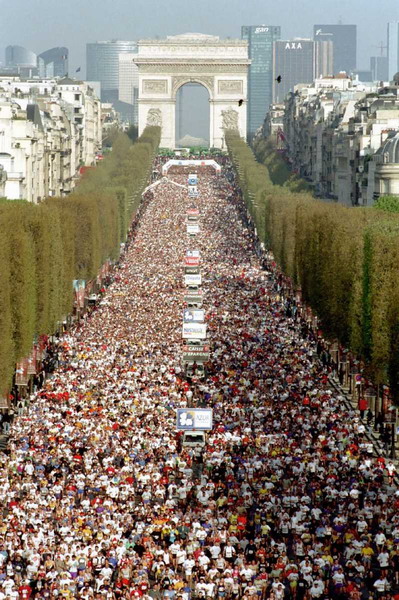
Jen and I looking a little nervous before the start.
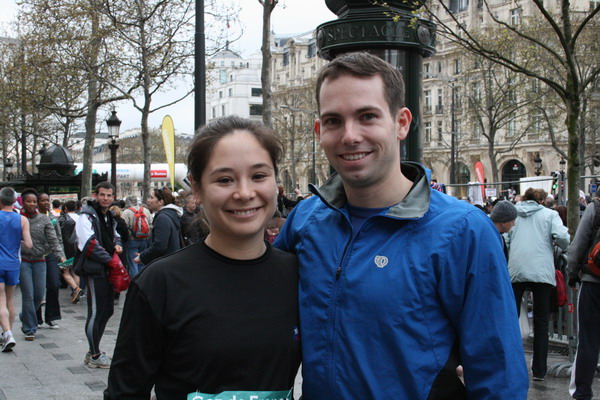
As you look across the sea of people, you can see Jen in the lower center of the image.
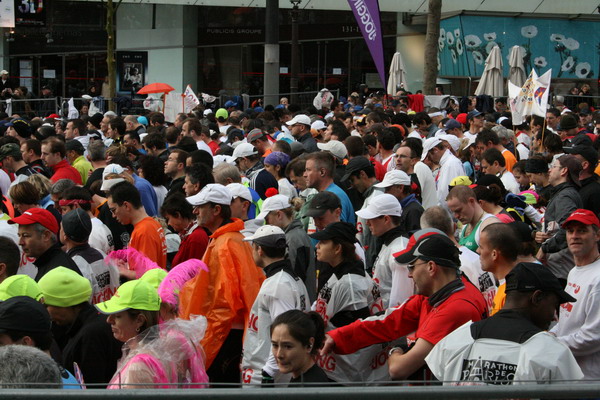
It was a little chilly waiting around for the starter’s pistol. So, race organizers solved that problem by giving each competitor a plastic bag to retain heat and stay warm. Unfortunately, that meant that there was a HUGE mess to clean up.
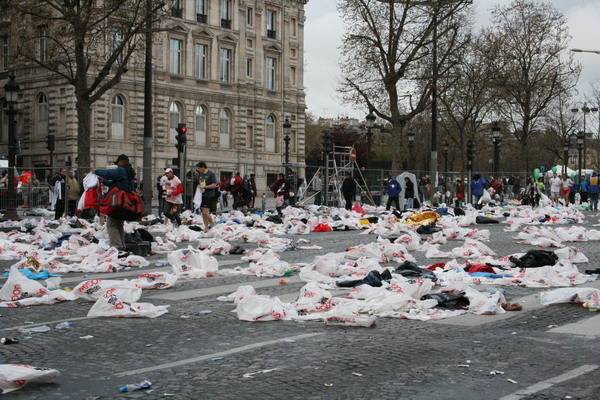
Some groups and individuals really dressed up for the race. From about mile 8 to mile 10, I was running next to Superman.
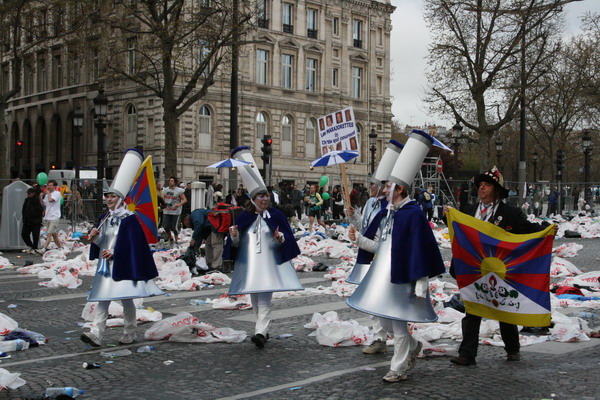
Jen ran next to this guy for quite a while. He had quite a stride!
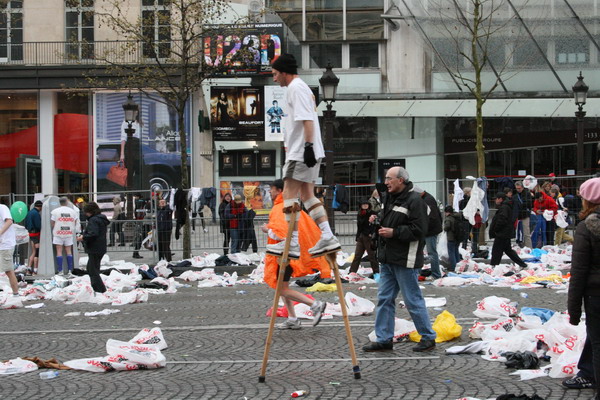
A whole legion was waiting to clean up…
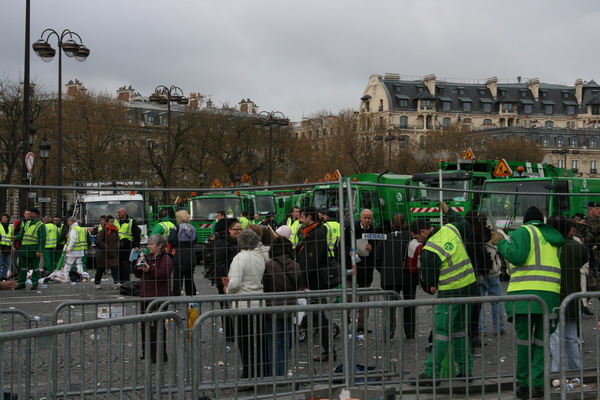
And there was a lot to clean up.
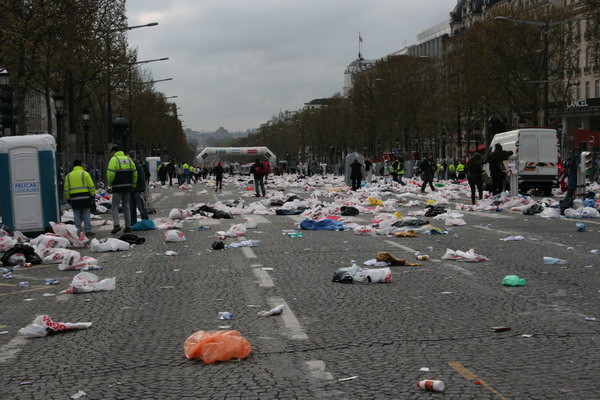
Of all the photography stations along the way, this is the only one that got an image of me…
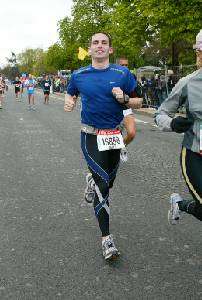
Hail the conquering heroes!
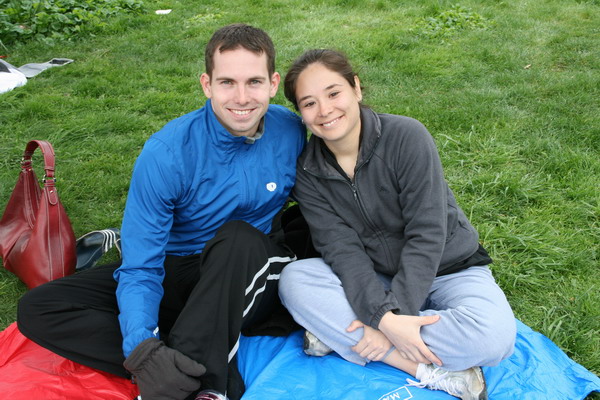
We made it all 42.2 kilometers (or 26.2 miles). Actually, because I was in a crowd the whole time, I ended up running a bit farther (almost 27 miles on the GPS). Jen and I were almost exactly on our goal times. I finished at around 3:40 officially (3:36 unofficially) and Jen “ran her little heart out” for a 4:32.
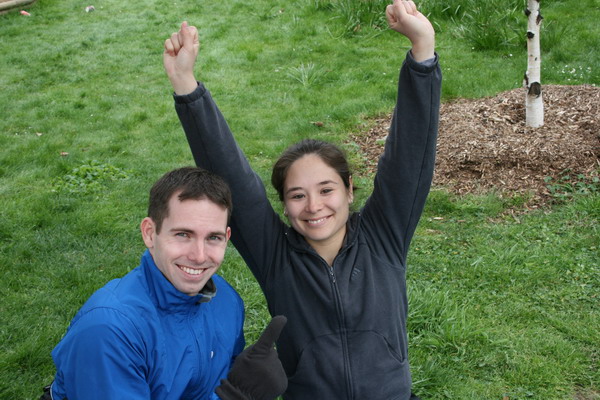
Some interesting facts about running a marathon. Of course, it’s an homage to a Greek messenger who, according to legend, ran from the port town of Marathon to Athens, warned the senate of impending invasion, and died on the spot. Fortunately, as far as I know, no one died in this race, but it was certainly a grueling race. In fact, most endurance runners hit a ‘wall’ of sorts at around mile 20 in a marathon. Since I had already hit that in my training and other races, I knew what to expect, but it was still a bit frustrating. I wanted my legs to work faster than they were.
As a bit of biological background, the carbohydrates a person eats are converted into glycogen by the liver and muscles for energy (or calorie) storage. Glycogen burns quickly to provide energy. Runners can store about 2,000 calories of glycogen in their bodies, enough for about 30 km (or 18-20 miles) of running. Not surprisingly, this is also the point where most people hit the wall. When glycogen runs low, the body must then burn stored fat for energy, which does not burn as readily. This is the point when physiologically runners experience dramatic fatigue, or ‘hit the wall’. Jen described it vividly as “a bad dream … like a monster chasing you and for some reason your legs aren’t running fast enough and you can’t will them any faster.”
Although we both hit the wall pretty hard, we were close to our goals and pleased with the result. We weren’t number 1 (Tsegaye Kebide from Ethiopia who ran it in 2:06:40 was the actual winner), we certainly felt like champions.
Since we’ve had some time to reflect on it, we’re already plotting out the best race for all four of us to compete in. So, stay tuned to the results from the next marathon.
Both before and after the race we took some time to see more sights of the city. Here is Jen looking particularly French.
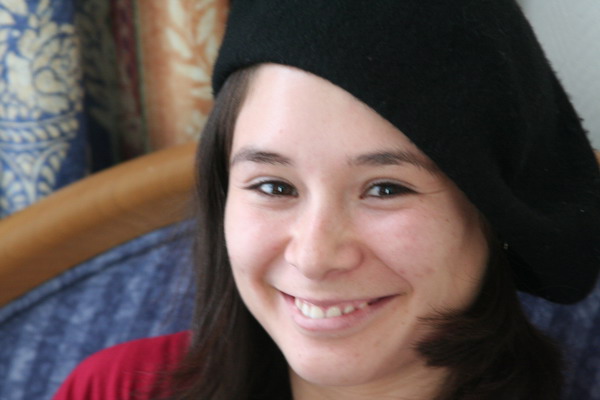
Jen caught me taking a picture of Anna…
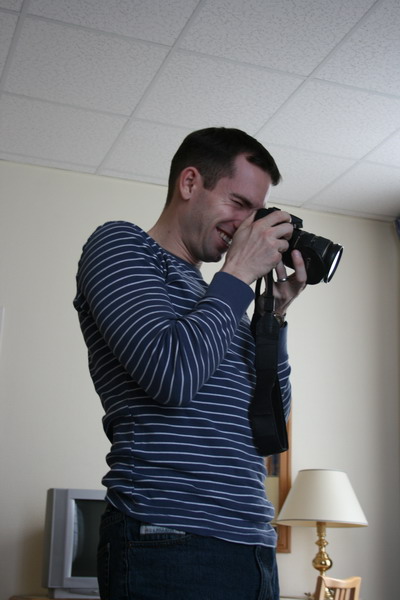
Near our hotel was the very pleasant Luxembourg Garden.
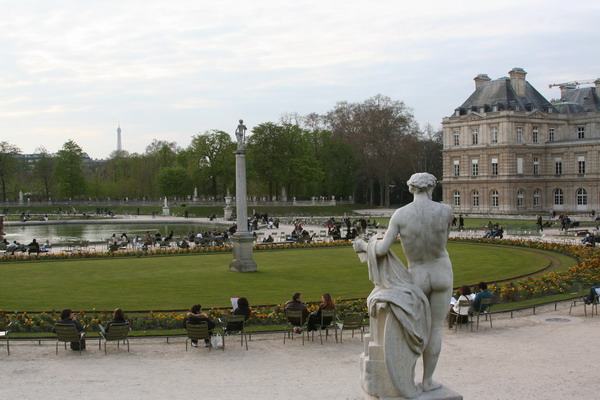
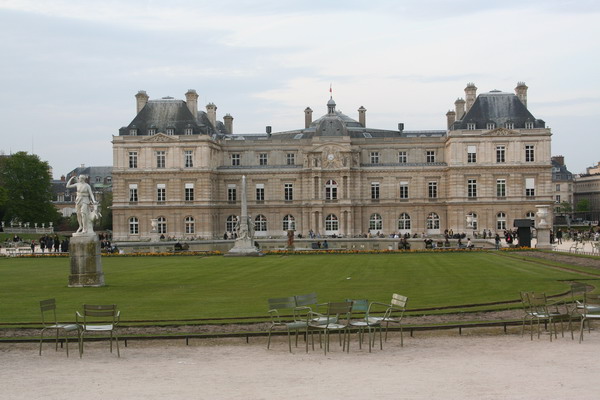
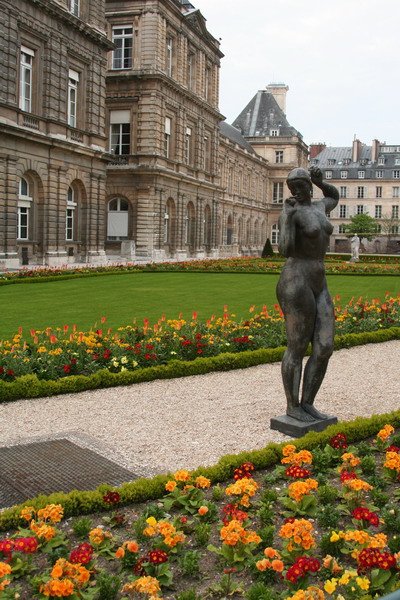
I love all the random works of art throughout the city. Here you can also see the Panthéon with its panoply of French patriots buried inside.
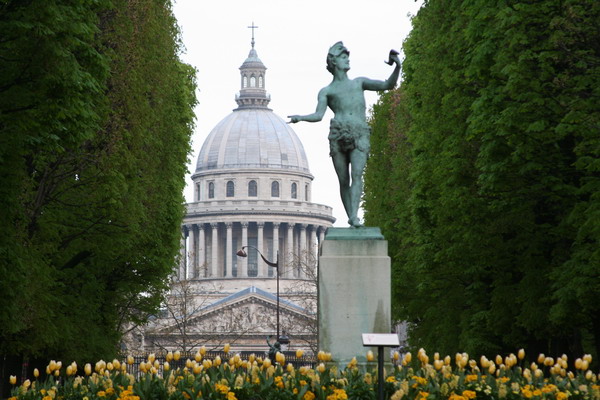
We also visited the light filled Sainte-Chapelle on the island of the city (near Notre Dame). It is a glorious Gothic chapel built by Louis IX (the name sake of St Louis in Missouri) between 1242-1248. Gothic architects loved to use light and this is perhaps the highest realization of that ideal. Also, there are 1,100 Biblical scenes represented on the stained glass (amazingly, two-thirds of it is original).
Suffice it to say, this place is amazing inside and out.
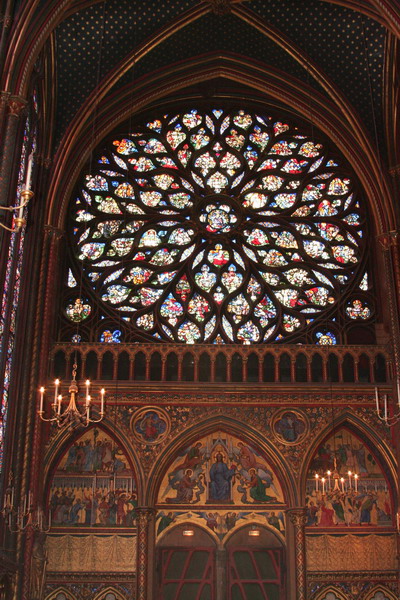
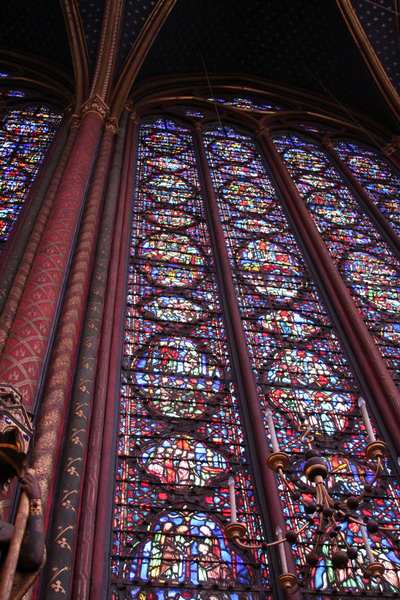
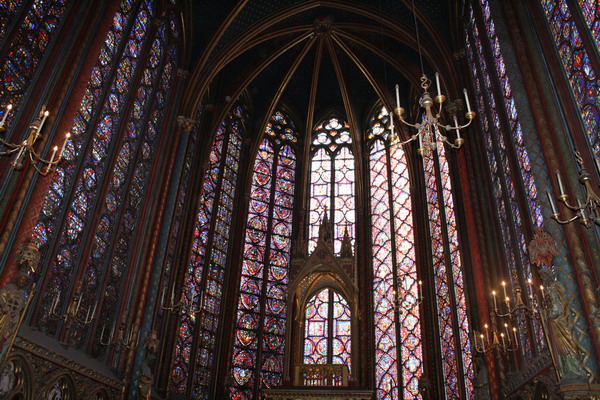
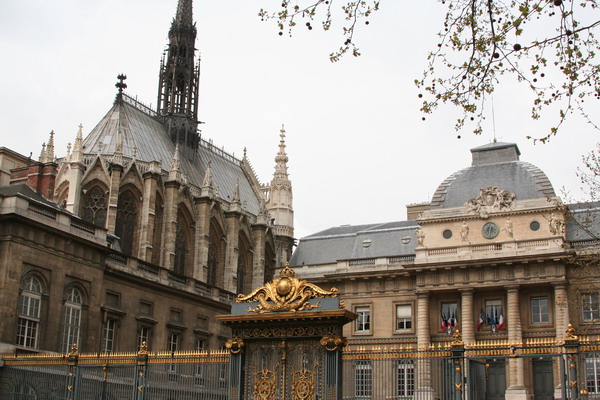
Here are the girls looking cute, but perhaps a little cold.
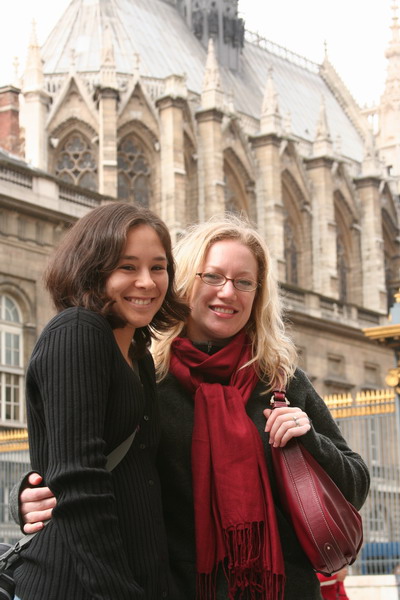
I love the motto of the French Republic: Liberty, Equality, Brotherhood.
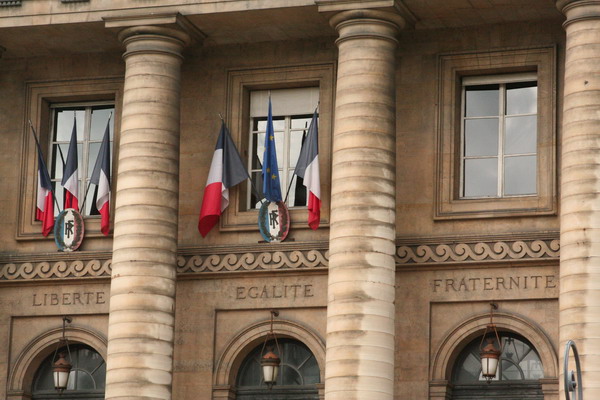
We also visited the reverse designed Pompidou Center for Modern Art. It is filled with fascinating art from perhaps the most fascinating and tumultuous century in the current era, the 20th. I think it’s still waiting for the world to catch up with it.
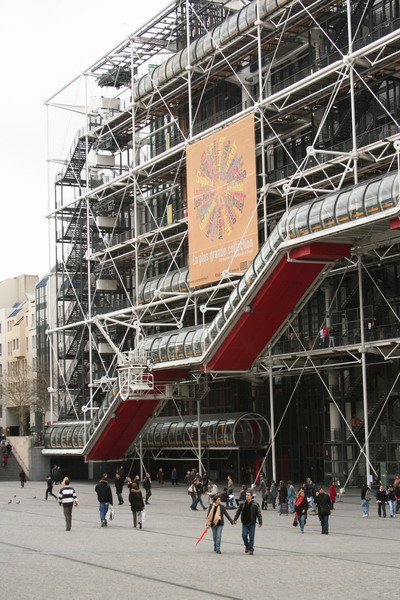
Finally, what visit to a major city would be complete without a picture of its subway system. I love European mass transportation.
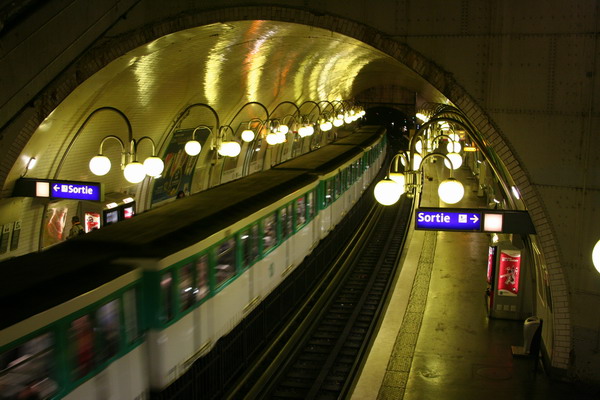
So, until the next adventure…
–Jim
Month: May 2008
Champagne, France
Back at the end of March, we took a trip to one of the smallest, most famous wine producing regions in France: Champagne. The capital of the region, Reims (unusually pronounced Raance) is also the largest city and where we began our tour. However, the first sight we saw was not the famous champagne houses, nor vineyards. Instead we toured the cathedral where French monarchs were once crowned (27 to be exact). Rebuilt in the thirteenth century, after a devastating fire, Notre Dame de Reims is the focal point of the city to which a confident Joan of Arc led Louis VII to his coronation in 1429.
Here is how the beautiful west portal looks today.
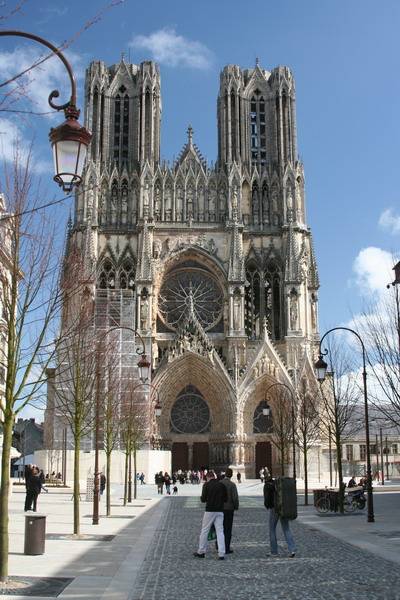
Inside, you are able to see the rose windows. Although the majority of the church was destroyed by vicious fighting in WWI, this is (partly at least), original glass.
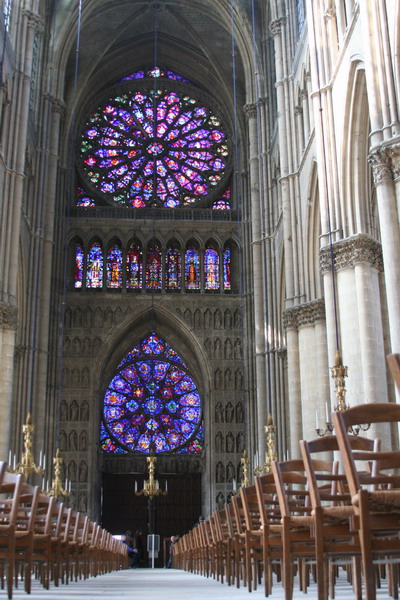
Anna and our friend, Hayley, make a beautiful counterpoint to the windows.
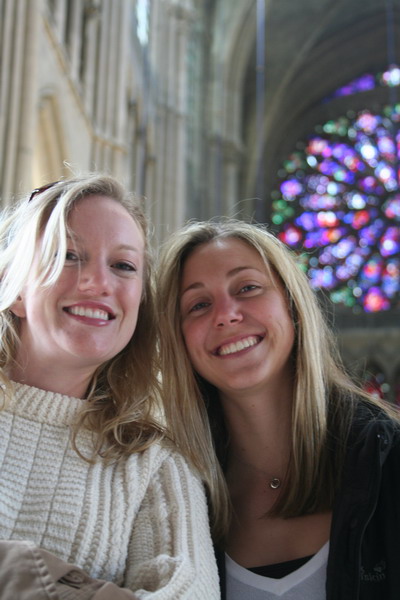
Less colorful, but still beautiful stained glass.
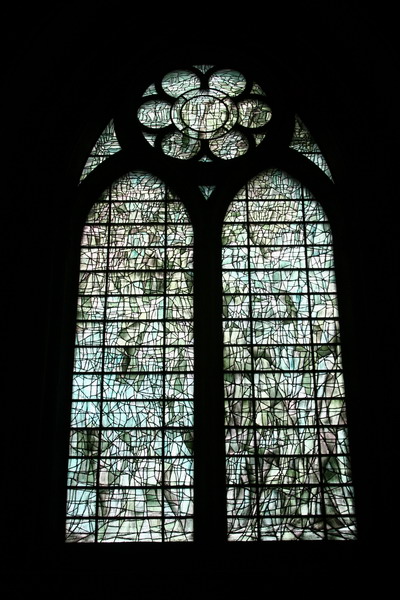
This 1974 Marc Chagall window looks right at home. Although born in Belarus, he was half French and contributed to a number of large scale civic and religious works.
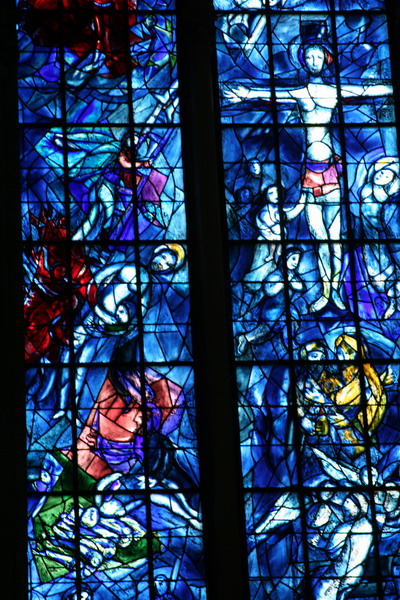
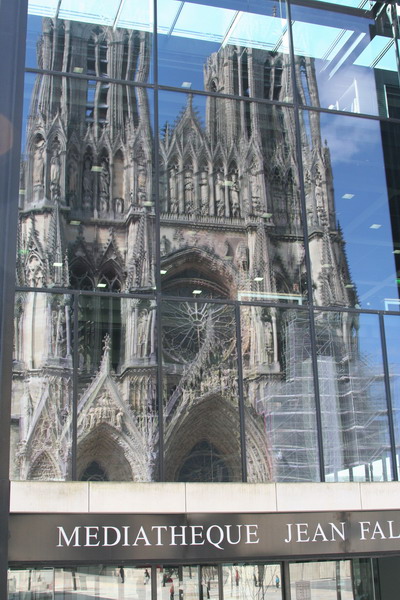
Next stop were the champagneries. First up was the famous Taittinger House.
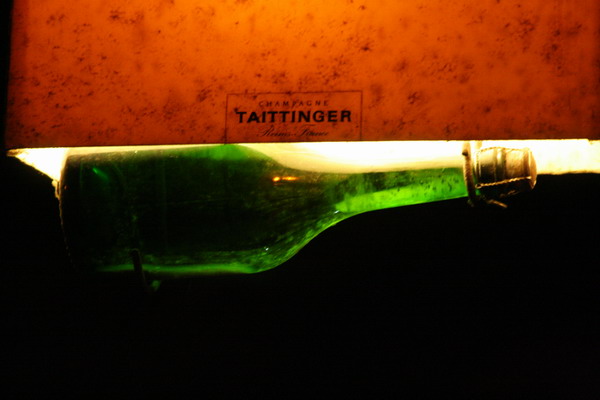
The cellars are carved out of the chalk soil. Many were carved in the fourth century by Roman city builders. Now they are a warehouse to permit the champagne bottles to properly age.
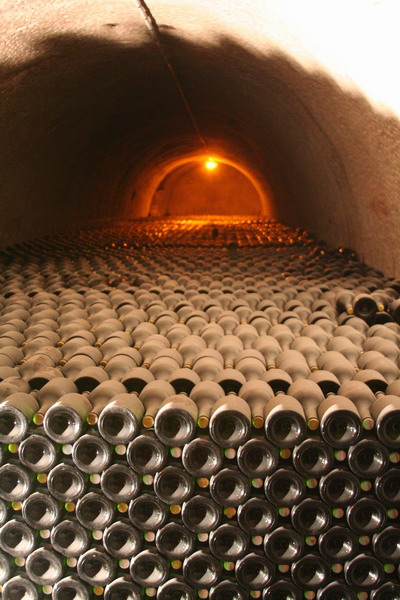
Hayley was hoping this one would spring a leak…
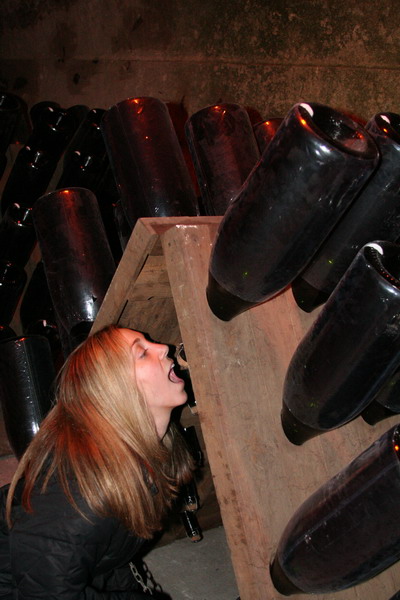
Ready to ascend back into the light of the surface world.
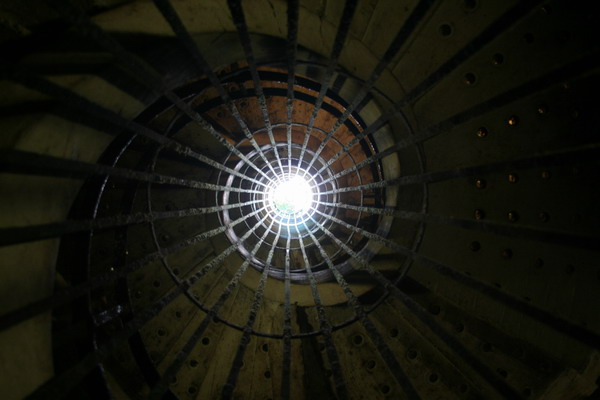
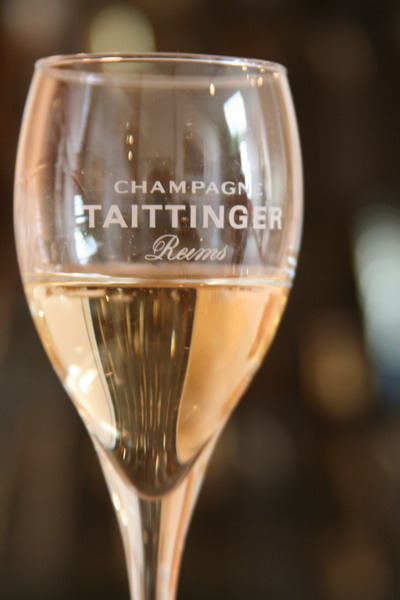
Next stop was outside of Reims, at a champagne house called:
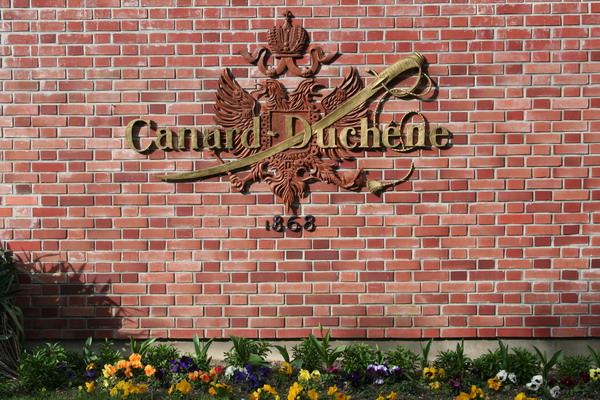
Although the vines weren’t blooming, it was impressive to see the rolling hills and vineyards. They told us each plant would produce about one bottle.
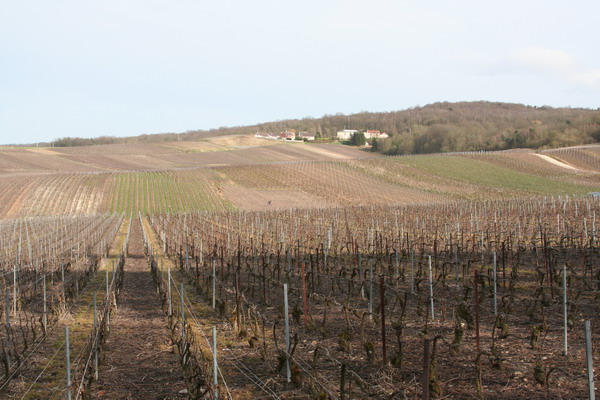
During the 3-8 process of aging bottles of champagne, eventually a small amount of sediment that collects at the cork. During the eventual bottling process, that sediment is frozen and disgorged. After, the void is filled with a small amount of still wine.
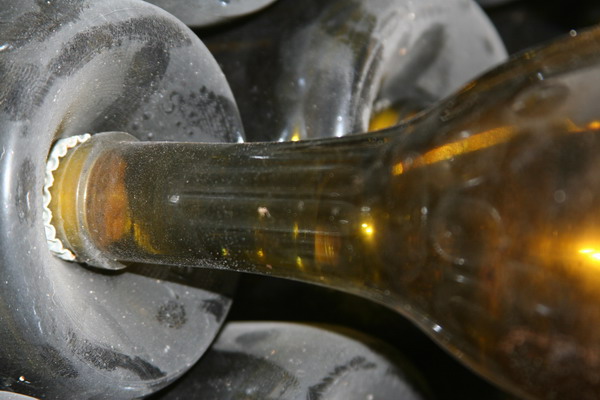
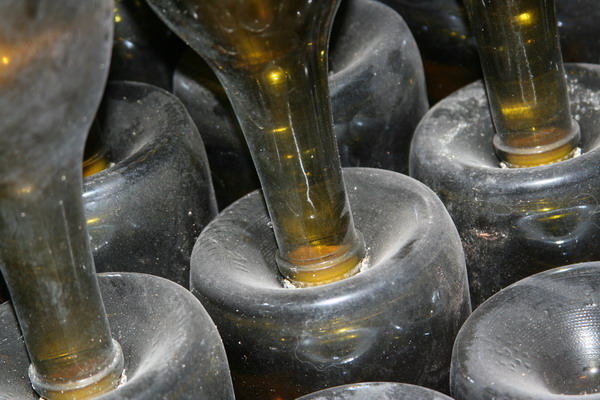
Interestingly, there are three grapes that typically make up champagne. Each house makes it own blend. There is a master wine maker who decides what amount from each grape is required. Also, we were surprised to find out that although champagne is golden in color, two of the three grapes are red. Once the grapes are pressed, the skins are removed. It is the skin that gives the red color.
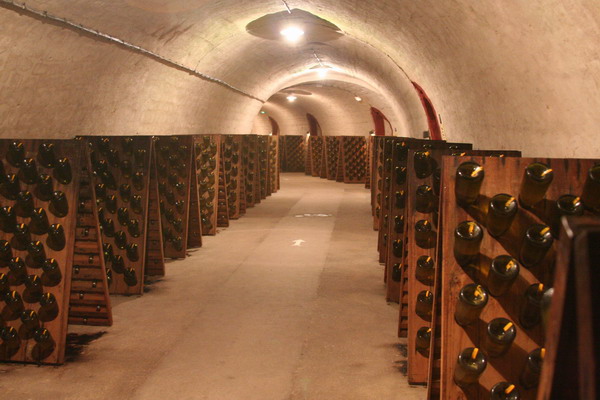
Then, there is the bottle size. Although most bottles are 750 mL, there is a whole range. The double is called a magnum (1.5L). Here you can see the high end of the spectrum. The largest here is called a Nebuchadnezzar. It holds a whopping 15L of bubbly.
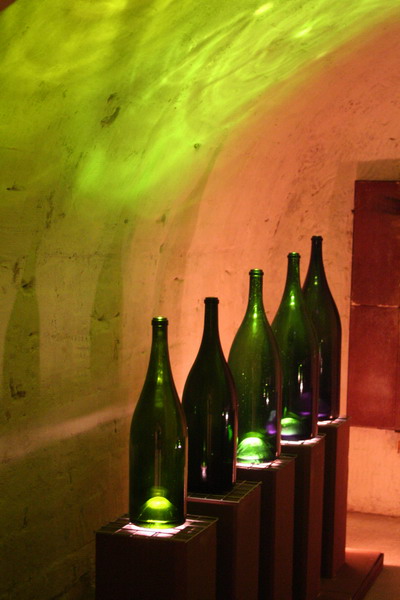
Hayley felt well connected with this random headstone…
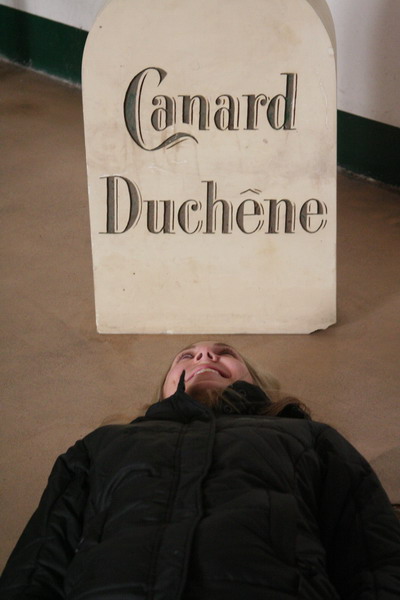
Although we don’t have any group pictures (that turned out), Dave and Dominique also joined the three of us.
Here is a picture from the bed and breakfast we stayed in. Our hostess was very nice, but when she found out I spoke French, she ceased speaking to us in English and told me I was responsible for translating. While I was flattered, she had a number of house rules I wanted to make sure we followed. Nothing like a little pressure to make you remember your French lessons!
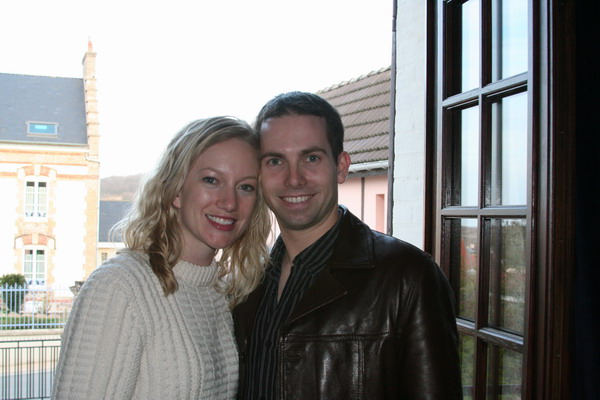
The next day we visited the town of Epernay and the second capital of Champagne. This is the home of the giant champagne house, Moët and Chandon. They also produce the world renowned Dom Pérignon. What most people don’t realize is that this was a real person and one of the first producers of champagne. He was a Benedictine monk who was the cellar master of an Epernay Abbey in the 17th and 18th centuries. There is much myth surrounding the man and this effervescent drink. However, what we know today is that his name is one of the most famous brands of quality champagne in the world.
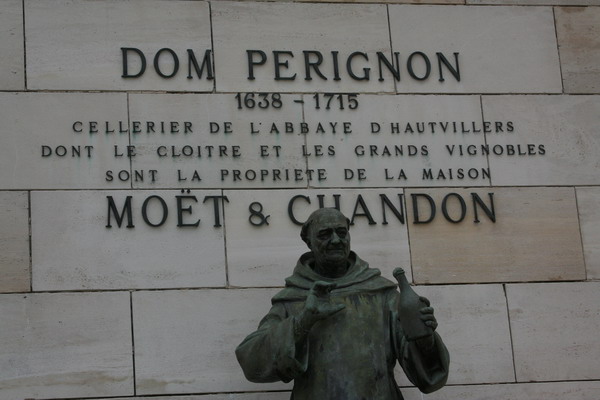
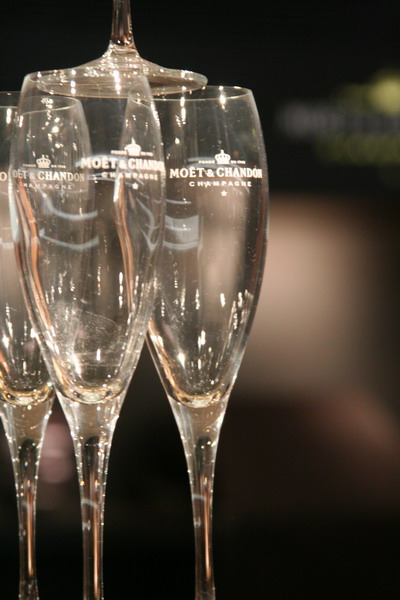
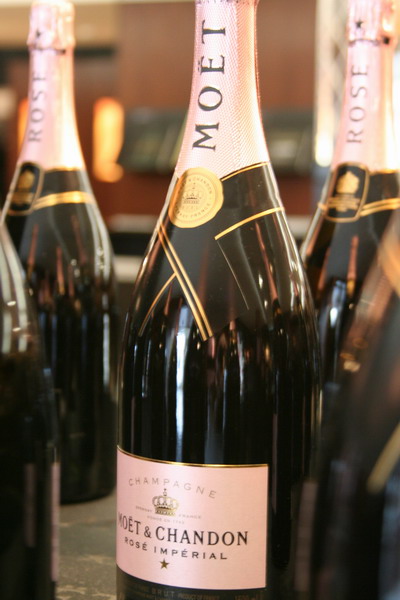
One thing is certain about the Dom today. His drink is expensive!
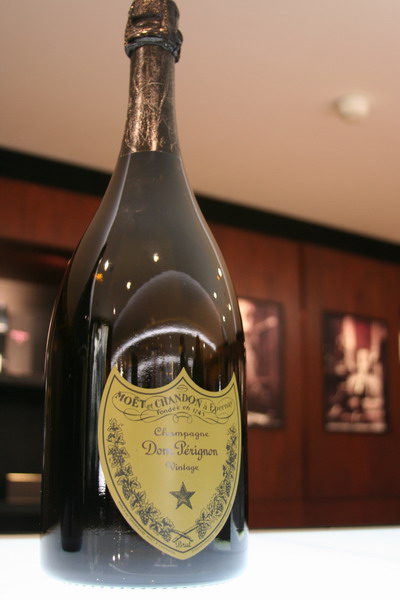
That concludes our trip into the nearby champagne region of France. It’s important to remember only wine produced in this region can truly be called Champagne. It’s EU law to respect this fact. Of course, in the US, that is not as important and many sparkling wines are inappropriately called champagne. Unfortunately for French champagne producers, EU law doesn’t extend to other parts of the world.
So, until the next adventure…
–Jim
